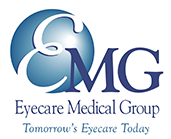
Many adults understand their eyes will change as they age. They’re aware that their vision may dim due to cataracts or become fuzzy from presbyopia, which causes difficulty seeing objects up close.
However, many people have never heard of Age-Related Macular Degeneration (AMD), yet it’s the leading cause of blindness among older Americans. While vision loss from AMD is often irreversible, new treatments have dramatically changed the course of this disease over the last ten years.
When diagnosed early, AMD is manageable. That’s why February is an important month for adults fifty and older.
The American Academy of Ophthalmology observes AMD Awareness Month this month. You can preserve your vision and see well into your later years if you pay attention to AMD.
Because eye exams are your first line of defense against AMD, it’s important to visit your eye doctor regularly. Keep reading to learn what to know during Macular Degeneration Awareness Month!
Understanding Macular Degeneration
The macula is a part of the retina located near the optic nerve. AMD results from aging because the macula can start to deteriorate as you get older, and changes occur that affect your sight.
Clear central vision, which is objects that you view in your direct line of sight, depends on the macula. Macular degeneration can affect one or both eyes.
If it’s only present in one eye, the other eye will compensate, masking symptoms that may appear.
Types of Macular Degeneration
The early stage of this eye condition is called dry macular degeneration. Parts of the macula get thinner with age, and small clumps of proteins, lipids, or fats, called drusen, appear.
Late-stage of this eye condition is called wet macular degeneration. This involves the growth of abnormal blood vessels under the retina, which leak fluid into the retina.
This can also lead to scarring of the macula. Vision loss is faster with wet AMD than with dry AMD.
The good news is that only ten percent of dry macular degeneration cases progress to late-stage macular degeneration. However, ninety percent of the blindness caused by macular degeneration is due to wet macular degeneration.
This is why catching AMD in the early stages is vital. If it’s not treated until there are visible symptoms such as blurriness, there may be permanent vision damage.
An early diagnosis can and will save your sight with appropriate treatment.
Symptoms of Macular Degeneration
If you experience one or more of these problems, you may have macular degeneration:
- -A blurry or blind spot in your central vision in one or both eyes
- -Visual distortions, such as straight lines bending
- -Colors aren’t as intense or bright
One way to regularly check your vision is to use an Amsler grid, a typical grid with a dot in the middle. Look at it with one eye, then test the other.
The grid should appear normal, with even spacing between squares and no dim or blurry spots or wavy lines.
Risk factors for Macular Degeneration
You are at increased risk for developing AMD if:
- -You regularly eat meat, butter, and cheese, and your diet is high in saturated fat
- -You are overweight
- -You’re a smoker
- -You’re fifty years old or older
- -You have high blood pressure, high cholesterol levels, or heart disease
- -You have a family history of AMD
Adopt Good Habits
To avoid developing AMD or other vision problems, these are good rules to follow:
- -Control your cardiovascular disease and high blood pressure
- -Quit smoking
- -Maintain or lose weight through a healthier diet and regular exercise.
- -Eat fruits and vegetables to make sure you’re getting antioxidants.
- -Eat fish and nuts for omega-3 fatty acids.
Are you experiencing signs of Macular Degeneration? Schedule an appointment at Eyecare Medical Group in Portland, ME, today!





